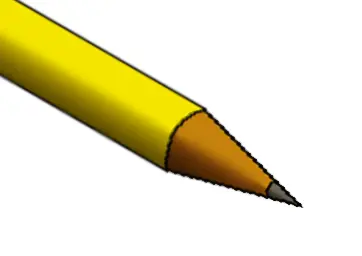Here’s a much more elegant solution for 17

I hate this so much
Unless I’m wrong, it’s not the most efficient use of space but if you impose the square shape restriction, it is.
That’s what he said. Pack 17 squares into a square
My point was that it doesn’t break my brain at all when considering there’s an artificial constraint that affects efficiency and there’s just not going to be a perfect solution for every number of squares when you consider the problem for more than just 17 squares
You may not like it but this is what peak performance looks like.
That tiny gap on the right is killing me
It is one prove more, why it is important to think literally out of the box. But too much people of this type
Not complete without the sounds
I love when I have to do research just to understand the question being asked.
Just kidding, I don’t really love that.
To be fair, the large square can not be cleanly divided by the smaller square(s). Seems obvious to most people, but I didn’t get it at first.
In other words: The size relation of the squares makes this weird solution the most efficient (yet discovered).
The outer square is not given or fixed, it is the result of the arrangement inside. You pack the squares as tightly as you can and that then results in an enclosing square of some size. If someone finds a better arrangement the outer square will become smaller
Bees seeing this: “OK, screw it, we’re making hexagons!”
4-dimensional bees make rhombic dodecahedrons
Fun fact: Bees actually make round holes, the hexagon shape forms as the wax dries.
Bestagons*
https://kingbird.myphotos.cc/packing/squares_in_squares.html

Mathematics has played us for absolute fools
With straight diagonal lines.

Homophobe!
hey it’s no longer June, homophobia is back on the menu
Why are there gaps on either side of the upper-right square? Seems like shoving those closed (like the OP image) would allow a little more twist on the center squares.
there’s a gap on both, just in different places and you can get from one to the other just by sliding. The constraints are elsewhere so wouldn’t allow you to twist.

You have a point. That’s obnoxious. I just wanted straight lines. I’ll see if I can find another.
I think this diagram is less accurate. The original picture doesn’t have that gap
Can someone explain to me in layman’s terms why this is the most efficient way?
It crams the most boxes into the given square. If you take the seven angled boxes out and put them back in an orderly fashion, I think you can fit six of them. The last one won’t fit. If you angle them, this is apparently the best solution.
What I wonder is if this has any practical applications.
There’s very likely applications in algorithms that try to maximize resource usage while minimizing cost
yeah it vindicates my approach of packing stuff via just throwing it in there. no I’m not lazy and disorderly, this is optimal cargo space usage
It’s a problem about minimizing the side length of the outer rectangle in order to fit rectangles of side length 1 into it.
It’s somehow the most efficient way for 17 rectangles because math.
These are the solutions for the numbers next to 17:

It’s not necessarily the most efficient, but it’s the best guess we have. This is largely done by trial and error. There is no hard proof or surefire way to calculate optimal arrangements; this is just the best that anyone’s come up with so far.
It’s sort of like chess. Using computers, we can analyze moves and games at a very advanced level, but we still haven’t “solved” chess, and we can’t determine whether a game or move is perfect in general. There’s no formula to solve it without exhaustively searching through every possible move, which would take more time than the universe has existed, even with our most powerful computers.
Perhaps someday, someone will figure out a way to prove this mathematically.
They proved it for n=5 and 10.
And the solutions we have for 5 or 10 appear elegant: perfect 45° angles, symmetry in the packed arrangement.
5 and 10 are interesting because they are one larger than a square number (2^2 and 3^2 respectively). So one might naively assume that the same category of solution could fit 4^2 + 1, where you just take the extra square and try to fit it in a vertical gap and a horizontal gap of exactly the right size to fit a square rotated 45°.
But no, 17 is 4^2 + 1 and this ugly abomination is proven to be more efficient.
These categories of geometric problem are ridiculously difficult to find the definitive perfect solution for, which is exactly why people have been grinding on them for decades, and mathematicians can’t say any more than “it’s the best one found so far”
For this particular problem the diagram isn’t answering “the most efficient way to pack some particular square” but “what is the smallest square that can fit 17 unit-sized (1x1) squares inside it.” - with the answer here being 4.675 unit length per side.
Trivially for 16 squares they would fit inside a grid of 4x4 perfectly, with four squares on each row, nice and tidy. To fit just one more square we could size up to 5x5, and it would remain nice and tidy, but there is then obviously a lot of empty space, which suggests the solution is in-between. But if the solution is in between, then some squares must start going slanted to enable reduction in size, as it is only by doing this we can utilise the unfilled gaps to save soace by poking corners of other squares into them.
So, we can’t answer what the optimal solution exactly is, or prove none is better than this, but we can certainly demonstrate that the solution is going to be very ugly and messy.
Another similar (but less ugly) geometric problem is the moving sofa problem which has again seen small iterations over a long period of time.
All this should tell us is that we have a strong irrational preference for right angles being aligned with each other.
Lol, the ambidextrous sofa. It’s a butt plug.
For two!
Now I want to rewatch Requiem for a dream.
Thanks for the explanation
Any other configurations results in a larger enclosed square. This is the most optimal way to pack 17 squares that we’ve found
Source?
Bidwell, J. (1997)
In the meme.
Do you know how inspiring documentaries describe maths are everywhere, telling us about the golden ratio in art and animal shells, and pi, and perfect circles and Euler’s number and natural growth, etc? Well, this, I can see it really happening in the world.
Is this a hard limit we’ve proven or can we still keep trying?
We actually haven’t found a universal packing algorithm, so it’s on a case-by-case basis. This is the best we’ve found so far for this case (17 squares in a square).

Figuring out 1-4 must have been sooo tough
It’s the best we’ve found so far










